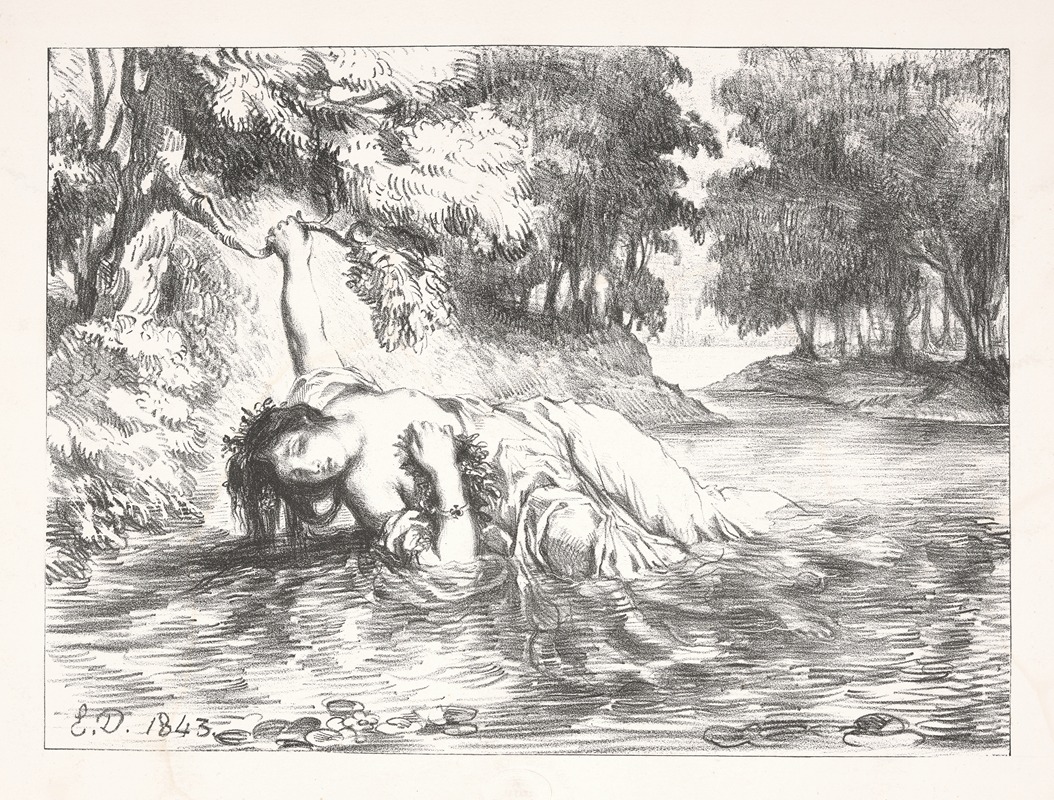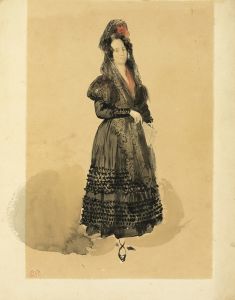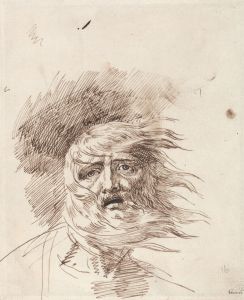
The death of Ophelia
A hand-painted replica of Eugène Delacroix’s masterpiece The death of Ophelia, meticulously crafted by professional artists to capture the true essence of the original. Each piece is created with museum-quality canvas and rare mineral pigments, carefully painted by experienced artists with delicate brushstrokes and rich, layered colors to perfectly recreate the texture of the original artwork. Unlike machine-printed reproductions, this hand-painted version brings the painting to life, infused with the artist’s emotions and skill in every stroke. Whether for personal collection or home decoration, it instantly elevates the artistic atmosphere of any space.
Eugène Delacroix, a prominent French Romantic artist, is renowned for his expressive brushwork and vibrant use of color. Among his many works, "The Death of Ophelia" is a notable piece that reflects his fascination with literature and drama. Delacroix was deeply inspired by the works of William Shakespeare, and "The Death of Ophelia" is a testament to this influence, drawing from the tragic character Ophelia in Shakespeare's play "Hamlet."
Ophelia is a character who descends into madness following the death of her father, Polonius, and the complex relationship with Prince Hamlet. Her demise is one of the most poignant moments in the play, as she drowns in a river, surrounded by flowers. This scene has captivated artists and audiences alike, becoming a symbol of innocence lost and the tragic consequences of political and personal turmoil.
Delacroix's interpretation of Ophelia's death is characterized by his Romantic style, which emphasizes emotion and drama. Although specific details about the painting's creation are limited, it is known that Delacroix was active during the 19th century, a period when Romanticism was flourishing in Europe. This movement was marked by a focus on individualism, the sublime, and a deep appreciation for nature and the past.
In "The Death of Ophelia," Delacroix captures the tragic beauty of Ophelia's final moments. His use of color and light conveys the ethereal and melancholic atmosphere surrounding her death. The painting likely features Ophelia in a serene pose, surrounded by the natural elements that play a crucial role in her story. Delacroix's ability to convey complex emotions through his art is evident in this work, as he portrays Ophelia's innocence and the tragedy of her fate.
Delacroix's works often reflect his interest in literature and his ability to translate literary themes into visual art. His paintings are known for their dynamic compositions and the emotional intensity they convey. "The Death of Ophelia" is no exception, as it encapsulates the Romantic ideals of beauty, emotion, and the exploration of human experience.
While Delacroix's "The Death of Ophelia" is not as widely discussed as some of his other works, such as "Liberty Leading the People," it remains an important piece within his oeuvre. It highlights his skill in interpreting literary subjects and his contribution to the Romantic movement in art.
Overall, Eugène Delacroix's "The Death of Ophelia" serves as a poignant reminder of the enduring power of Shakespeare's characters and the ability of visual art to capture the depth of human emotion. Through his masterful use of color, composition, and emotion, Delacroix brings to life the tragic story of Ophelia, offering viewers a glimpse into the Romantic fascination with beauty, tragedy, and the complexities of the human condition.


















